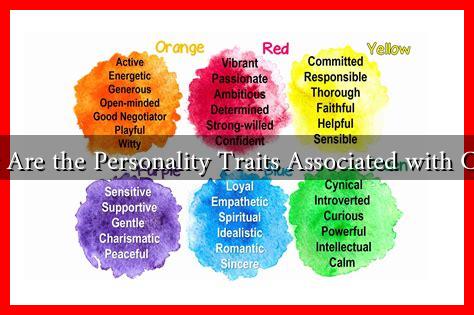-
Table of Contents
What Are the Personality Traits Associated with Colors?
Colors have a profound impact on our emotions, behaviors, and even our personality traits. The study of color psychology explores how different hues can influence our feelings and perceptions. This article delves into the personality traits associated with various colors, providing insights into how these associations can affect our daily lives, choices, and interactions.
The Psychology of Color
Color psychology is a fascinating field that examines how colors affect human behavior and emotions. Different cultures may interpret colors differently, but there are some universal associations that have been widely recognized. Understanding these associations can help individuals make informed decisions in areas such as marketing, design, and personal branding.
Common Color Associations
Here are some common colors and the personality traits they are often associated with:
- Red: Often linked to passion, energy, and action, red can evoke strong emotions. It is associated with excitement and can stimulate appetite, making it a popular choice in restaurants.
- Blue: This color is often seen as calming and trustworthy. It is associated with stability, reliability, and professionalism. Many corporate brands use blue to convey a sense of security.
- Yellow: Bright and cheerful, yellow is associated with optimism and creativity. It can stimulate mental activity and is often used in marketing to grab attention.
- Green: Symbolizing nature and tranquility, green is associated with growth, balance, and harmony. It is often used in wellness and environmental branding.
- Purple: This color is often linked to luxury, creativity, and spirituality. It can evoke feelings of mystery and is frequently used in branding for high-end products.
- Black: Associated with sophistication and elegance, black can also represent power and authority. However, it can also evoke feelings of sadness or negativity in certain contexts.
- White: Symbolizing purity and simplicity, white is often associated with cleanliness and innocence. It is commonly used in minimalist designs to create a sense of space.
Case Studies and Real-World Applications
Understanding the personality traits associated with colors can have practical applications in various fields. For instance, a study conducted by the University of Winnipeg found that people perceive red as a color that signifies dominance and power. This insight has been utilized in sports branding, where teams often incorporate red into their uniforms to evoke a sense of strength and aggression.
In marketing, companies like Coca-Cola and McDonald’s have effectively used red and yellow in their branding to stimulate appetite and create a sense of urgency. Research shows that these colors can increase impulse buying, making them effective choices for fast-food chains.
Color in Personal Branding
Individuals can also leverage color psychology in personal branding. Choosing the right colors for resumes, websites, and social media profiles can significantly impact how one is perceived. For example:
- Using blue in a professional setting can convey trustworthiness and reliability.
- Incorporating green can suggest a connection to nature and a balanced lifestyle.
- Utilizing purple can indicate creativity and a unique perspective.
According to a study by the Institute for Color Research, people make a subconscious judgment about a person, environment, or product within 90 seconds of initial viewing, and between 62% to 90% of that assessment is based on color alone. This statistic underscores the importance of color in shaping perceptions.
Conclusion
Colors play a significant role in influencing our emotions, behaviors, and perceptions. By understanding the personality traits associated with different colors, individuals and businesses can make informed decisions that enhance their branding, marketing strategies, and personal interactions. Whether you are designing a logo, choosing an outfit, or decorating your home, considering the psychological impact of color can lead to more effective communication and connection with others.
In summary, the associations we have with colors are deeply ingrained and can be harnessed to create positive outcomes in various aspects of life. By being mindful of the colors we choose, we can better express our personalities and influence how we are perceived by others.
For further reading on color psychology, you can explore resources such as Color Psychology.

